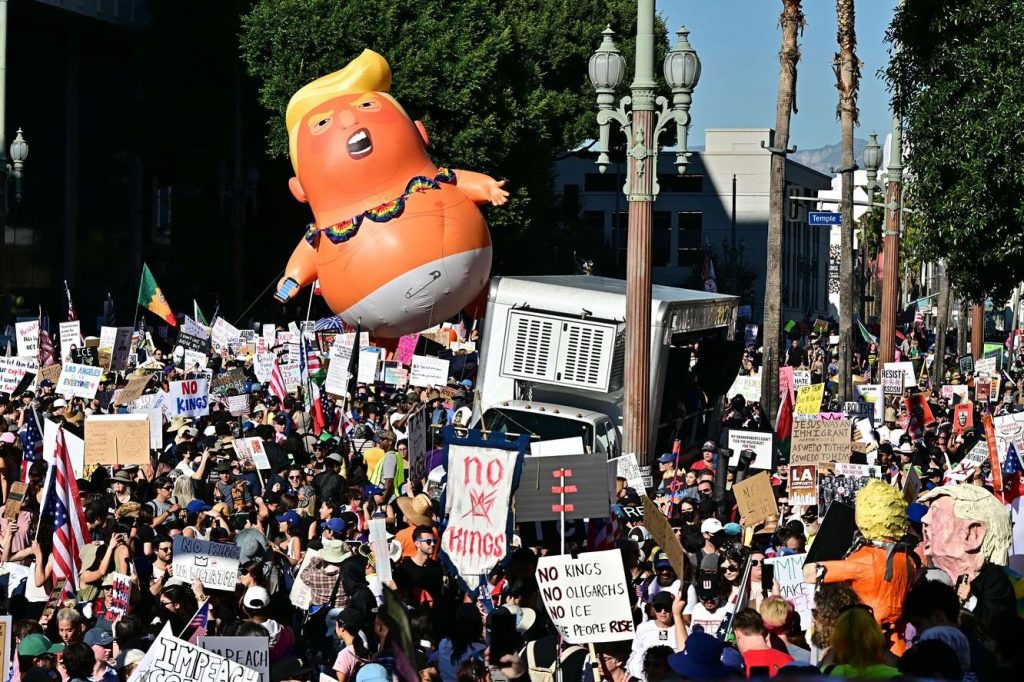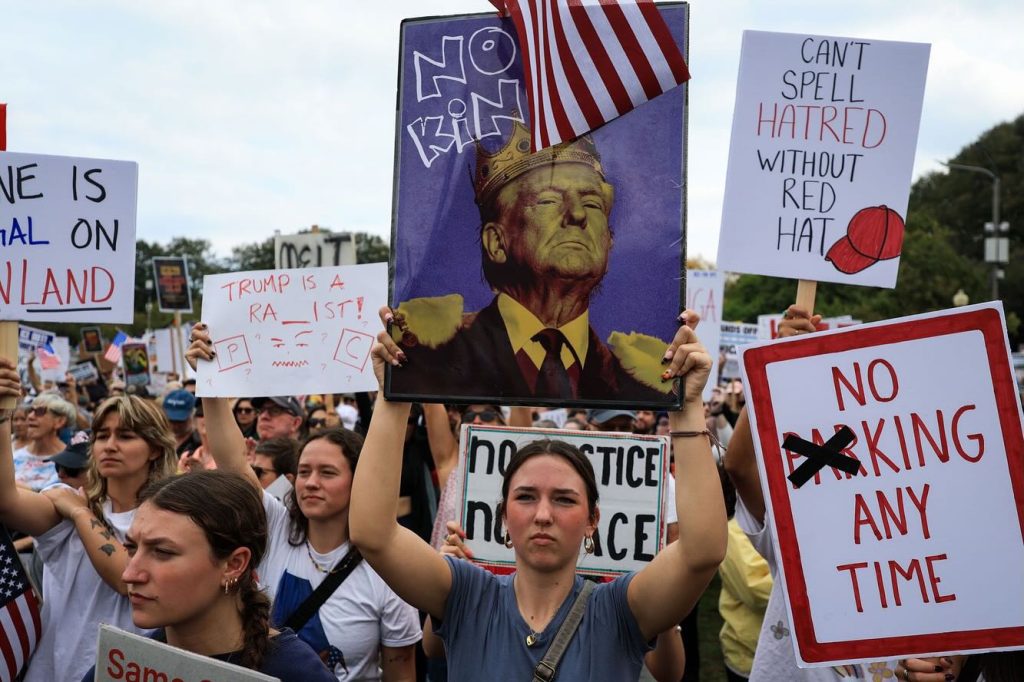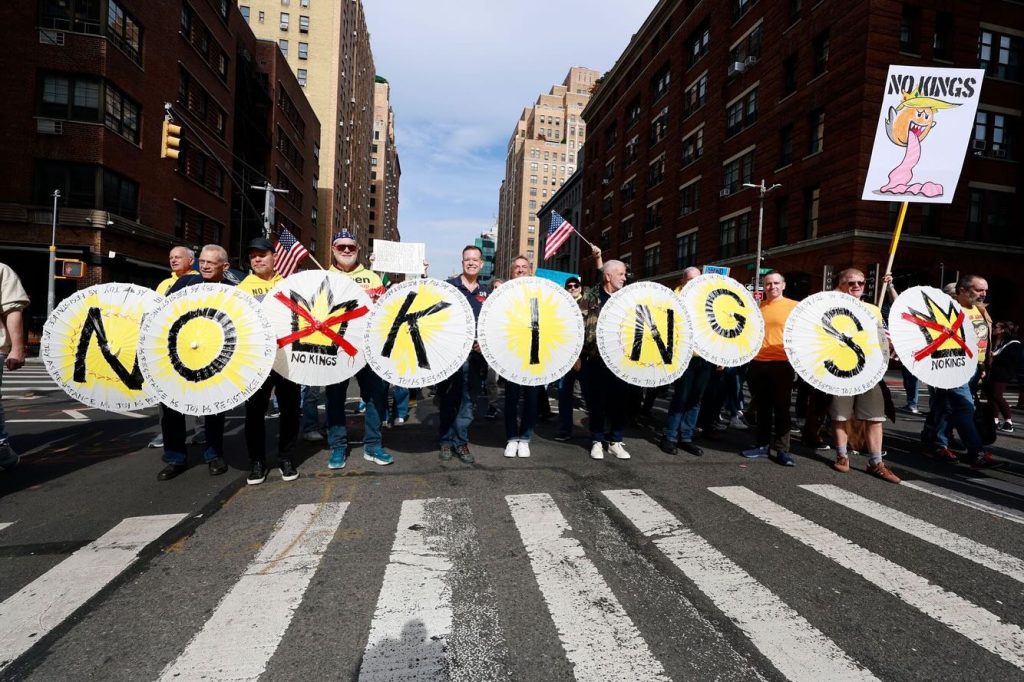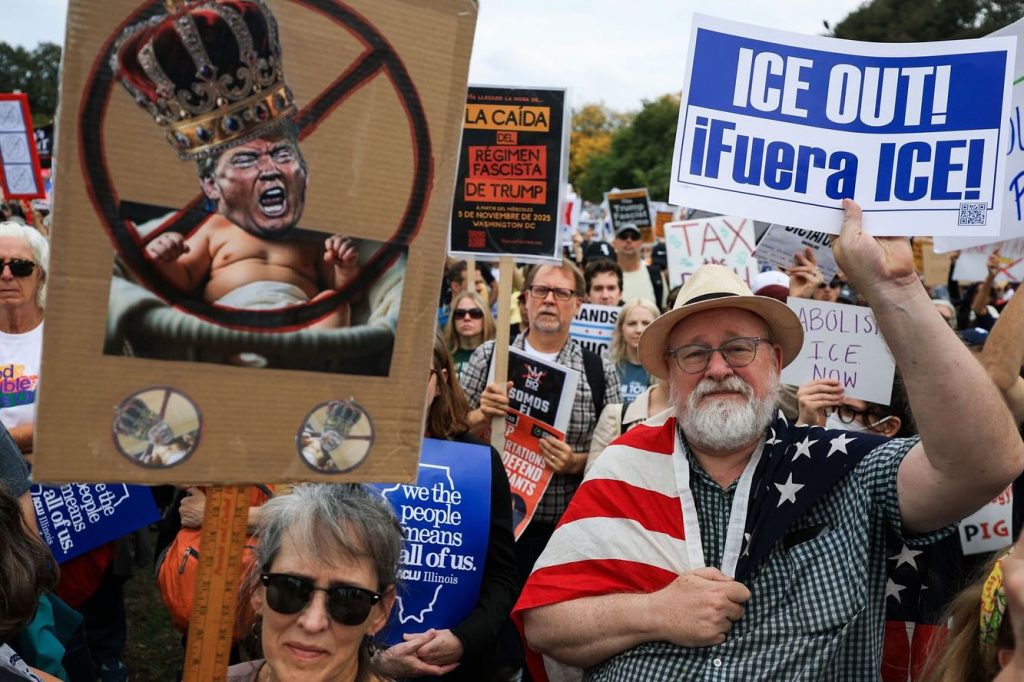From Coast to Coast: An Emotional Snapshot of the “No Kings” Movement as Millions Rise Up Against the Trump Administration
On Saturday I found myself scrolling through livestreams and photo after photo from city after city, watching as the streets of America filled with thousands, tens of thousands, even millions calling out a simple but powerful message: No kings. The phrase belonged to the movement known as No Kings protests, which on October 18 2025 staged rallies in every U.S. state — over 2,700 events, according to organizers. The tone of the day felt urgent rather than celebratory. There was a hum of determination, of people thinking: we are here because something feels wrong. The movement coalesced around concerns that under Donald Trump’s second term, certain norms of democracy are slipping — the use of extraordinary federal powers, mass deportations, the deployment of troops in cities, critics say.

I saw images of crowds in places like New York, Chicago, Washington D.C., Los Angeles, and even smaller towns — hand-painted signs reading “No Kings”, “We the People”, American flags held high, sometimes upside-down. One photo from a Michigan town showed 400 people in a town of 800 gathering just to make the message visible. It struck me how widespread the energy was: from big cities to rural county seats, people came out.

I imagine the feeling in the crowds: early morning chill, signs freshly painted, groups of friends and neighbors huddled close. One mother in D.C. told a reporter she brought her three-year-old daughter because she feared what she describes as an erosion of rights — she said, “these are people who came here believing in the American Dream.” That line stayed with me. This wasn’t angry for anger’s sake. It felt like fear, hope, and love tangled together.

Even amid the size of the day, it was the small moments that stayed with me. A protester dressed as George Washington in Alton, Illinois, symbolically drawing a line between then and now, reminded others that America’s foundation was built on resisting tyranny. In Montana, thousands gathered for the same message; in Oregon, in Nevada, plans reached every region. Organizers had prepared. They asked people to stay peaceful, know their rights, and focus on democracy rather than chaos. That’s critical because in today’s world, pictures of flare-ups dominate social media, but here the vast majority were calm, purposeful, defiantly peaceful. Law enforcement in many places reported no major arrests.

Of course, this kind of gathering doesn’t come without controversy. Supporters of Trump and Republicans called the movement anti-patriotic, un-American, even extremist in some speeches. But the people I saw personally seemed driven by the belief that America isn’t supposed to have kings — a phrase that resonates when the world is watching and when power seems concentrated. On the movement’s website they write: “On October 18 more than 7 million of us rose up at more than 2,700 events in all 50 states, D.C. and cities worldwide to say: America has no kings.”

I thought about the symbolic side of it: the crown, the throne, the king that America never was supposed to have. And here I saw everyday folks — nurses, teachers, students, parents, retirees — holding banners that said the same thing. “This isn’t just politics,” one message read on the site. “It’s democracy versus dictatorship. And together, we’re choosing democracy.”
I don’t know what the next day will bring. Movements like this don’t always change laws immediately — but they change hearts, minds, and the weather of the public conversation. Will elected officials listen? Will more Americans show up and keep showing up? Will the lines drawn yesterday shift the story of what we expect from our leaders? I hope so. I hope for the sake of those little voices who brought their children and held their signs. I hope because they said, simply, we matter too.
As the sunset faded, I imagined the crowds dispersing, some still chanting, kids dragging homemade signs, elderly people leaning on canes but refusing to be silenced. The day ended but for some, it proved that power belongs to the people — not the throne.


